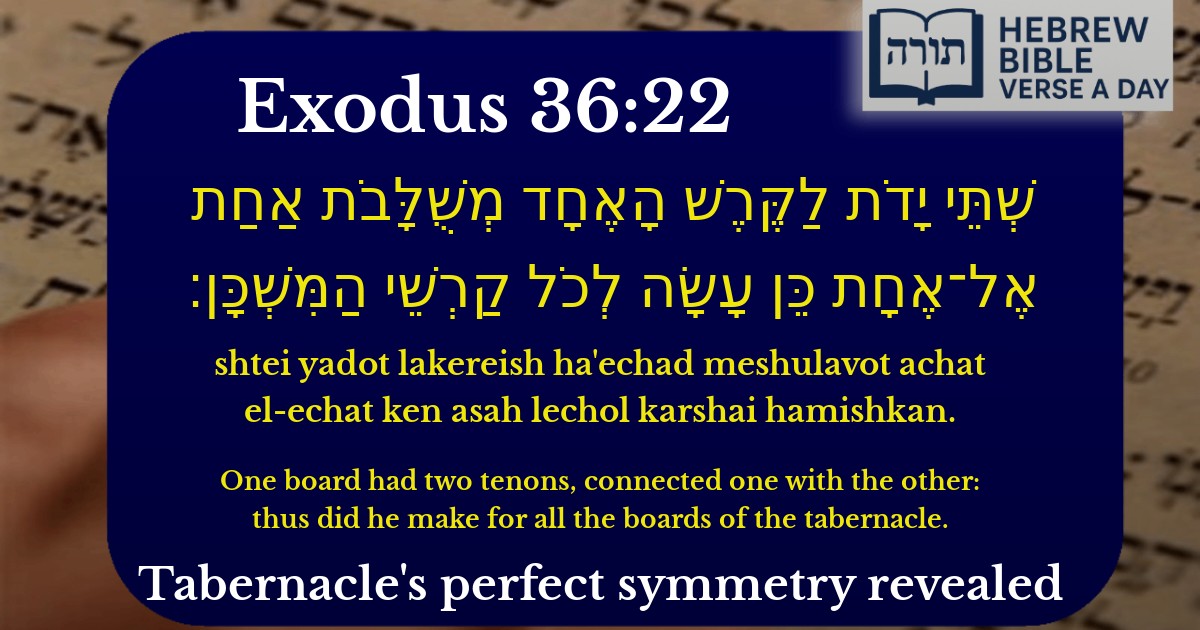Join Our Newsletter To Be Informed When New Videos Are Posted
Join the thousands of fellow Studends who rely on our videos to learn how to read the bible in Hebrew for free!
Hebrew Text
שְׁתֵּי יָדֹת לַקֶּרֶשׁ הָאֶחָד מְשֻׁלָּבֹת אַחַת אֶל־אֶחָת כֵּן עָשָׂה לְכֹל קַרְשֵׁי הַמִּשְׁכָּן׃
English Translation
One board had two tenons, connected one with the other: thus did he make for all the boards of the tabernacle.
Transliteration
Shtei yadot lakereish ha'echad meshulavot achat el-echat ken asah lechol karshai hamishkan.
Hebrew Leining Text
שְׁתֵּ֣י יָדֹ֗ת לַקֶּ֙רֶשׁ֙ הָֽאֶחָ֔ד מְשֻׁ֨לָּבֹ֔ת אַחַ֖ת אֶל־אֶחָ֑ת כֵּ֣ן עָשָׂ֔ה לְכֹ֖ל קַרְשֵׁ֥י הַמִּשְׁכָּֽן׃


Structural Design of the Mishkan's Boards
The verse (Shemot 26:17) describes the construction of the wooden boards (kerashim) for the Mishkan, each having two tenons (yadot) that interlocked with one another. Rashi explains that these tenons were like protruding pegs at the base of each board, which fit into corresponding sockets (adanim) made of silver (Shemot 26:19). This design ensured the stability and unity of the Mishkan's structure.
Symbolism of the Interlocking Tenons
The Midrash (Tanchuma, Terumah 9) highlights the spiritual significance of the interconnected boards:
Halachic Precision in Construction
The Rambam (Hilchot Beit HaBechirah 1:12) derives from this verse the importance of precision in building sacred structures. Each board had to be made identically (khen asah l'chol karshei haMishkan), teaching that uniformity and exactness are essential in divine service.
The Role of the Adanim (Sockets)
Ibn Ezra notes that the silver sockets served as the foundation, elevating the boards above the ground. This reflects the idea that holiness must be rooted in purity (symbolized by silver) and separated from earthly materialism.